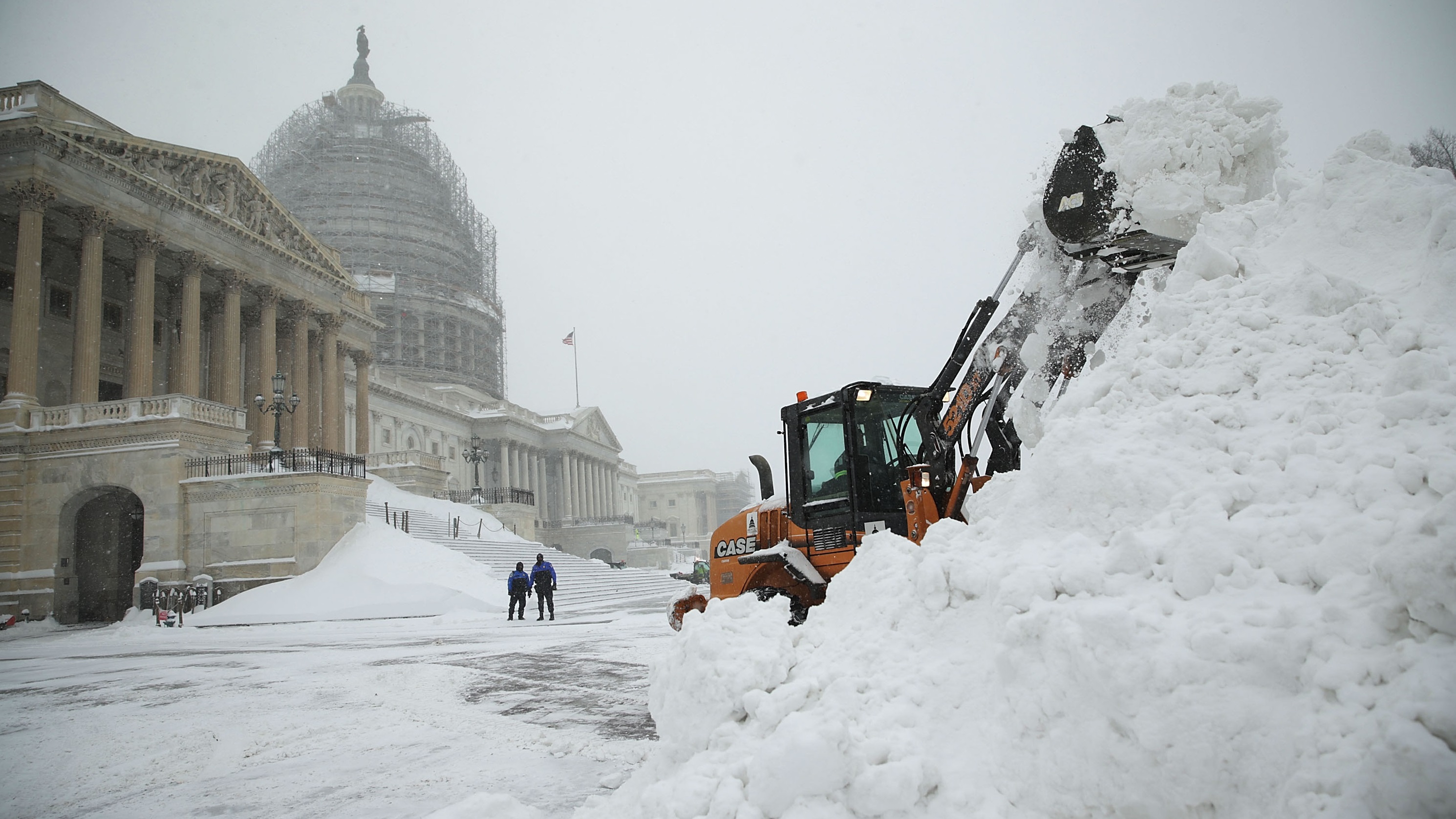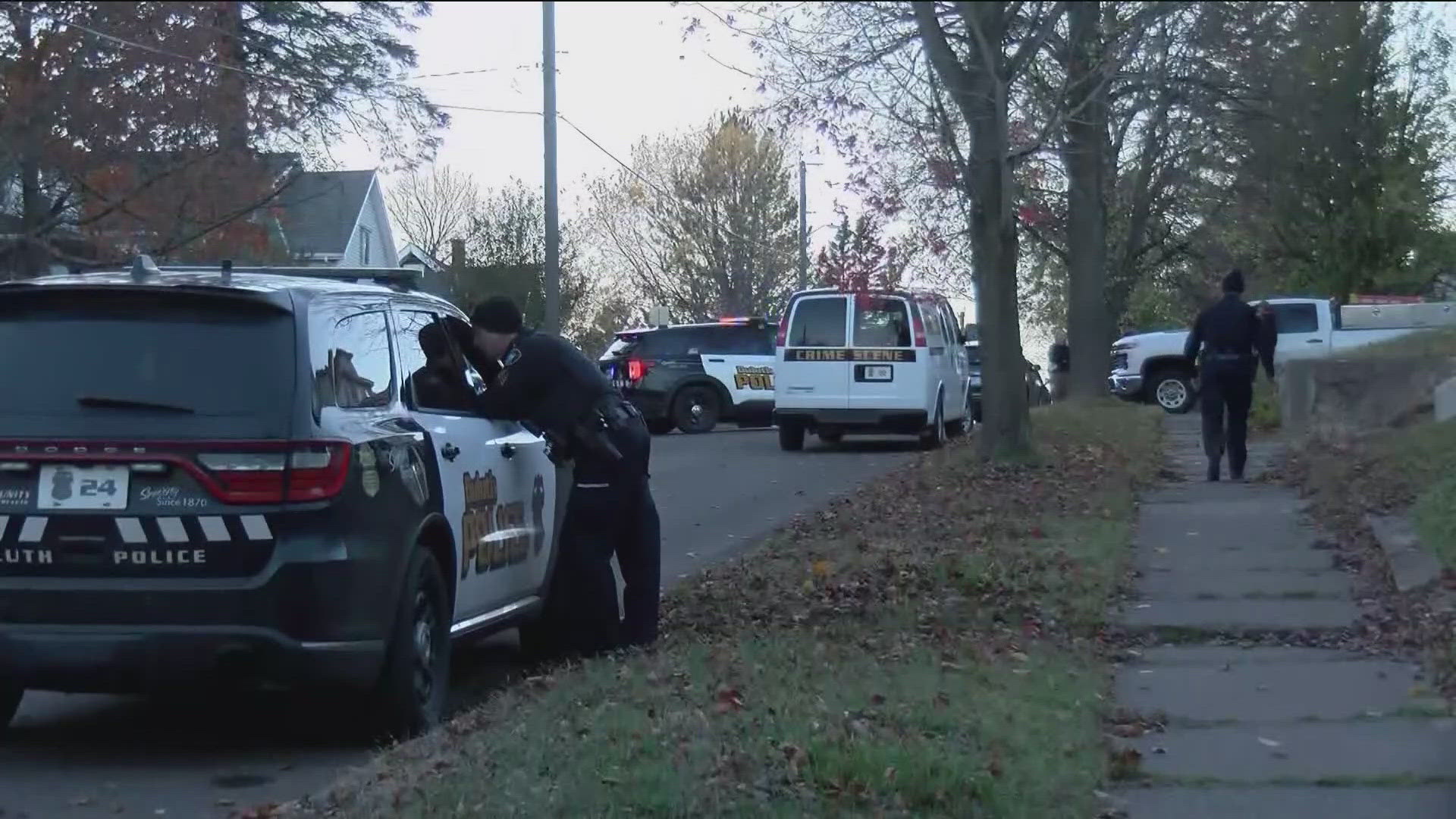The sun came out, travel bans were slowly lifted and the great dig-out of 2016 was in full force Sunday across much of the East after a brutal, record-setting snowstorm that paralyzed much of the region.
The storm rolled off the coast and into the Atlantic before sunrise, leaving behind clear skies and gusty winds. Baltimore and New York eased their travel bans, but some airports in the region remained closed. Washington D.C.'s transit system was scheduled to remain shut down all day.
For three cities -- Baltimore (29.2 inches), Allentown (31.9), and Harrisburg, Pa. (34), -- it was the biggest snowstorm ever recorded. New York City picked up 26.8 inches of snow, missing the all-time record by one-tenth of an inch, the National Weather Service said.
"The estimates were for half that much," Mayor Bill de Blasio told ABC News. "Things in most of the city are pretty good now. We still have some areas we have to do a lot more work on, but we've come through it pretty well."
In Central Park the mood was festive, with people saying "good morning" and "hello" to one another as they glided along on cross-country skis or toted a sled toward a hill. Jermaine Fletcher and Linda Kuo walked arm-in-arm along the Jacqueline Kennedy Onassis Reservoir, happy to be out after more than 24 hours holed up indoors.
"The snow is pretty," said Kuo, 33, of Manhattan. "It's always really pretty the day after."
Washington, D.C., saw 17.8 inches at Washington National Airport, the city's official measurement, while suburban Washington Dulles Airport was blasted with 29.3 inches. In nearby Arlington, Va., Allie Vasquez, 12, was spending all day in the snow, helping shovel out an elderly neighbor on an unplowed street before sledding with friends.
"Snow drifts are 3 or 4 feet deep in some places," Allie said. "I can barely walk through it. It's crazy."
At one point, more than 60 million people had been under blizzard, winter storm or freezing rain warnings as the storm's effects stretched from Georgia to Massachusetts. Other than some remaining coastal flood warnings along the New Jersey, Delaware and Long Island coasts Sunday morning, all other advisories and warnings had been dropped.
At least 20 people died in storm-related incidents in Tennessee, Kentucky, Maryland, North Carolina and Virginia, The Associated Press reported.
Almost 80,000 people along the eastern seaboard remained without power Sunday, much-improved from the height of the storm when 250,000 utility customers were affected. South Carolina, where icy conditions prevailed, and New Jersey, hard hit by storm surges during high tides, continued to have the biggest problems with outages.
New York City and Long Island began lifting a travel ban early Sunday that had included all transit from New Jersey bridges and tunnels into and out of the city. Baltimore lifted its driving ban, but still required vehicles to be equipped with special tires or chains.
"Historical snow storm. Please be patient, it will take awhile for clean-up especially small streets," the city Transportation Department tweeted.
Two of Washington, D.C.’s major airports – Dulles and Reagan National – said their runways would remain closed all day as crews grappled with heavy and drifting snow. At National Airport, more than 10% of Monday's schedule had already been grounded.
Airports in New York and Philadelphia hoped flights might resume Sunday, but warned that of greatly reduced schedules --. Already, 75% of the day’s flights at LaGuardia had been canceled as of 9 a.m., according to FlightAware. The numbers were only marginally better at Newark Liberty (about 60%), JFK (about 50%) and Philadelphia (about 35%).
Along the Delaware and New Jersey coasts, icy floodwaters pushed inland by the storm were surging into neighborhoods.
Sea Isle, N.J., tidal flooding sent a river of ice flowing several blocks down JFK Boulevard through a major retail area Saturday. Darren Laricks, a dispatcher with the Sea Isle police department, said no injuries were reported from the high water, which, Laricks said, was almost as high as during Superstorm Sandy in 2012.
“When the water just started rushing down, it was as impressive as some of the videos you saw of Japan during the tsunamis,” said Jason Pellegrini, owner of Steak Out restaurant in Sea Isle City, who was trapped inside by floodwaters. “It came in that fast,” he told AP.
In Delaware, Lewes set a record for coastal flooding while Dewey Beach recorded a 75-mph wind gust.
In New York, Gov. Andrew Cuomo said state officials were paying close attention to ocean and river storm surges during high tides.
“It was higher than usual, but it was not problematic,” Cuomo told NY1 News,
“This event has all the makings of a multibillion-dollar economic cost,” said meteorologist Steven Bowen of Aon Benfield, a London-based global reinsurance firm. After adding up damage to homes, vehicles, businesses and more, "we're potentially looking at one of the costlier winter storm events in recent memory,” he said.
The so-called Blizzard of 1996, which had a similar size and scope, had a $4.6 billion economic cost (in 2016 dollars), Bowen said. “No two events are identical, but this provides some context as to how costly these storms can be.”
Contributing: Ben Mutzabaugh, Melanie Eversley and Gregg Zoroya


